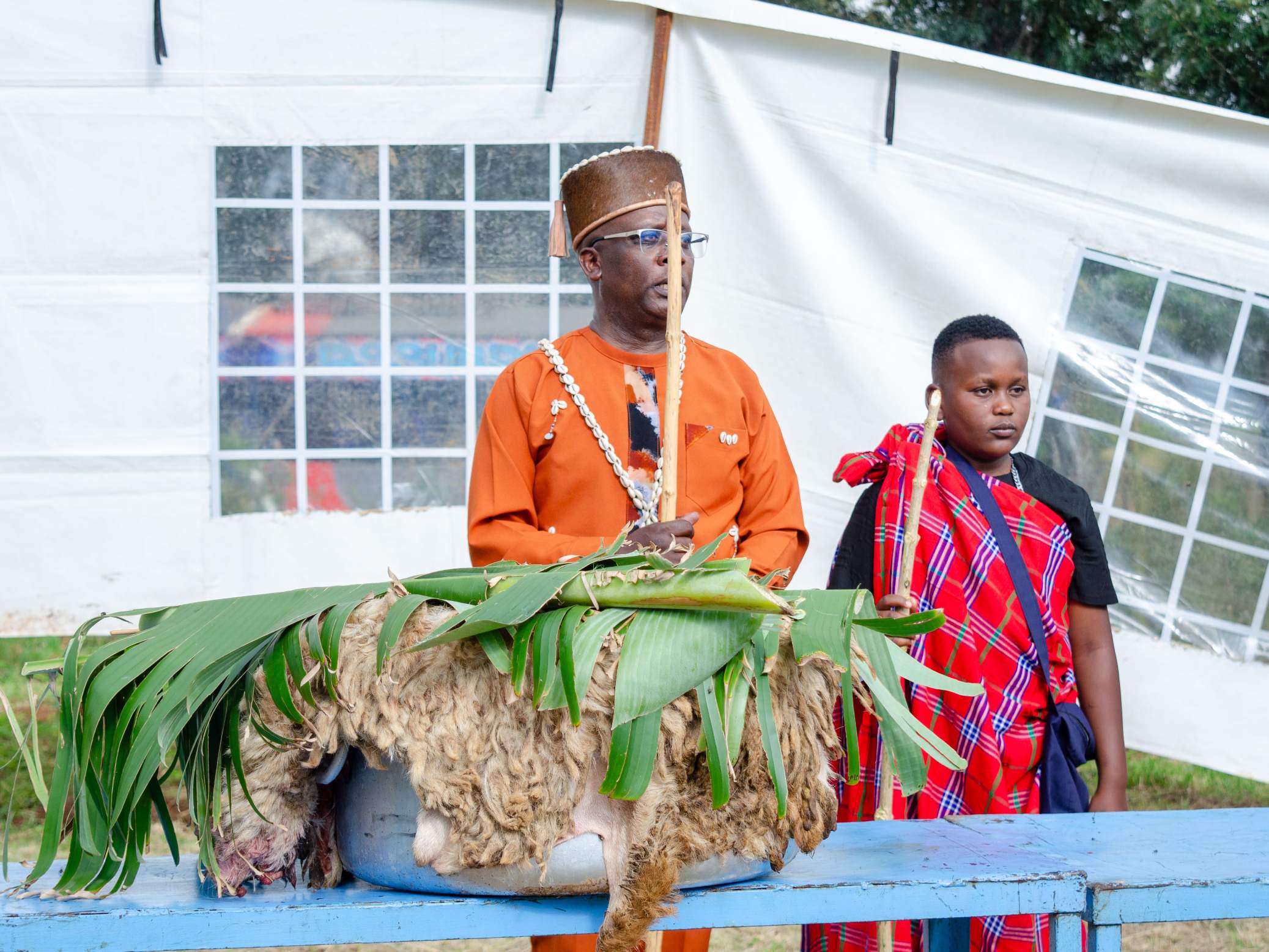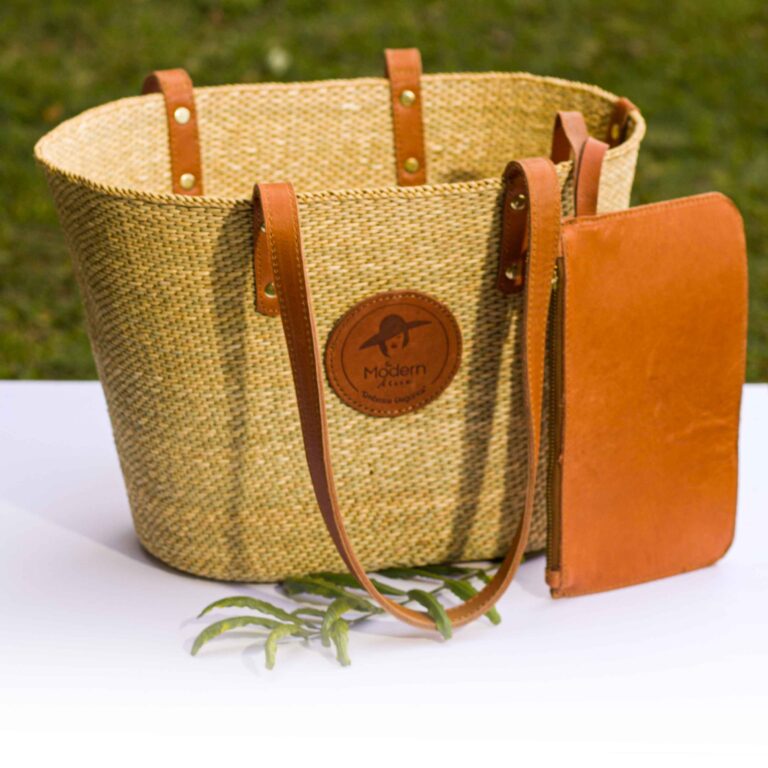Marriage among the Kikuyu people of Kenya is not just a union between two individuals—it is a binding contract between families, clans, and generations. One of the most sacred and final stages of a Kikuyu traditional wedding is the Ngurario ceremony, a rite that solidifies a couple’s marriage in the eyes of their elders and ancestors.
Held with immense respect and deep symbolism, the Ngurario is rich in ritual and cultural pride. It marks the ultimate transition of the bride from her family to her husband’s, and without it, a Kikuyu marriage is not considered complete—regardless of civil or church ceremonies.
Table of Contents
What Is Kikuyu Ngurario Ceremony?
The word Ngurario refers specifically to the goat-slaughtering ceremony that finalizes a Kikuyu marriage. It is derived from the verb “gutura”, which means “to slaughter.” More than a feast, Ngurario is a sacred rite of passage that recognizes the bride as a full member of her husband’s family.
Unlike modern weddings that prioritize documentation and pageantry, Ngurario connects marriage to ancestral approval. It is the gateway to legitimate marital status within the Kikuyu culture and community.
Sequence of Kikuyu Marriage Ceremonies
The Kikuyu marriage process traditionally unfolds through several stages:
- Kuhanda Ithigi – A symbolic act by the man’s family to declare marriage intentions.
- Kumenya Mucii – Introduction visit to the bride’s family.
- Ruracio – Dowry negotiation and payment, often involving livestock and gifts.
- Kuhingira – A form of homecoming or transition, where the bride symbolically enters the groom’s family.
- Ngurario – The climax and final rite that confirms the marriage is culturally valid.
Among these, Ngurario is the most respected, and no amount of dowry or church blessing can substitute its significance.
Where Is Ngurario Held?
Traditionally, the ceremony takes place at the bride’s parents’ home. In contemporary settings, it may be hosted at a garden or hired venue, but culturally rooted families still prefer the ancestral home to maintain spiritual continuity.
Key Rituals of Ngurario
The Ngurario ceremony features several symbolic acts, some of which date back generations. Each element is steeped in meaning and reflects the values of respect, family, and transition.
1. Slaughtering of the He-Goat (Ngurario Goat)
This is the centerpiece of the event. A healthy he-goat is selected and slaughtered by a chosen elder from the groom’s family. This goat is not just for feasting—it represents the groom’s household taking full responsibility for the bride.
The blood and act of slaughtering communicate to the ancestors that the marriage is official, and that the bride is being welcomed into a new lineage. The goat must be unblemished, symbolizing purity and respect for tradition.
2. Slaughtering of Two Sheep
Two sheep are also slaughtered—one contributed by each family:
- The bride’s family offers a sheep as a gesture of goodwill.
- The groom’s family reciprocates, showing respect and honoring the bride’s home.
This act promotes unity between the families, acknowledging the balance and mutual respect required in marriage.
3. Gutinia Kiande – Cutting the Shoulder
Perhaps the most symbolic ritual of the day is Gutinia Kiande, which means “cutting the shoulder.”
- After the goat is slaughtered, the shoulder (kiande) is carefully separated by a respected elder.
- The bride is then ceremonially served this shoulder meat by her mother-in-law or another senior woman in the groom’s family.
- The bride must eat a piece of the shoulder, signifying her full acceptance into the family and community.
This moment marks the spiritual transformation of the bride from a daughter in her parents’ home to a wife and future mother in a new household. It is often said: “ndamûtinire kiande” – “She has been given the shoulder” – meaning the woman is now fully married.
If this ritual is not performed, the marriage is not recognized by elders, regardless of other ceremonies.
4. Traditional Prayers and Blessings
Before any ritual begins, elders from both families offer prayers to Ngai (God) and invoke the spirits of ancestors to bless the union. These prayers ask for:
- Fertility
- Prosperity
- Long life
- Harmony between the families
Hands are often laid on the bride and groom during these prayers, symbolizing the passing of blessings from one generation to the next.
5. Traditional Dress and Music
Cultural pride is visible throughout the Ngurario ceremony:
- The bride often wears beads, a traditional dress or shuka, and may carry a small gourd (kyembe).
- The groom wears a cloak or animal skin, a rungu (ceremonial club), and often a headpiece.
- Music includes traditional Kikuyu songs played on drums and flutes, and Mũgithi music adds a celebratory vibe to the day.
The atmosphere is joyous, lively, and full of song, reflecting both the seriousness and joy of the occasion.
Symbolic Foods and Shared Meal
After the key rituals, the families and guests gather for a communal feast. Food symbolizes unity and abundance.
Common foods include:
- Nyama choma (roasted meat from the goat and sheep)
- Githeri (a mix of maize and beans)
- Irio (mashed potatoes, peas, and maize)
- Traditional vegetables like kunde and managu
- Uji or fermented porridge for elders
Sharing a meal after rituals confirms that the families have accepted each other and that the bride and groom’s union is celebrated by all.
Modern Touches in Ngurario
While Ngurario remains deeply traditional, many couples today are blending old and new. Modern touches include:
- Professional photography and videography: Capturing the sacred moments has become important. At Joe Photography, we specialize in covering Ngurario with creativity and cultural respect.
- Printed programs explaining rituals to guests
- Blended dress codes where the couple mixes cultural and modern fashion
- Customized cakes with cultural motifs
Despite modern influences, the heart of the ceremony—the goat, the shoulder, and the blessing—remains unchanged.
Why Kikuyu Ngurario Ceremony Still Matters Today
Many young Kikuyu couples still choose to hold Ngurario, even if they marry in church or in civil court. Why?
- It cements the marriage in cultural tradition.
- It honors the ancestors, ensuring their blessing.
- It connects families, building lasting relationships.
- It instills identity and pride, especially for future generations.
In some communities, failure to perform Ngurario may lead to rejection by elders or doubts about the marriage’s legitimacy.
Muratina in a Kikuyu Ngurario Ceremony
Muratina, the traditional Kikuyu brew, holds deep cultural and symbolic meaning in many Kikuyu rites of passage, especially during the Ngurario ceremony—the final and most respected stage of a traditional Kikuyu marriage. While it is commonly consumed as a celebratory drink, muratina serves a far greater role in Kikuyu society. It represents unity, blessings, cultural identity, and the sacred transition into married life.
The drink is made from the fruit of the muratina tree, known scientifically as Kigelia africana and colloquially referred to as the sausage tree due to its long, sausage-shaped fruits. Preparing muratina is an intricate and time-honored process that involves several natural ingredients. The key components include dried muratina fruit, sugarcane juice or honey (to sweeten and aid fermentation), millet or sorghum flour (as a fermentation base), and water. The fruit is typically dried in the sun, sometimes lightly smoked, then boiled and left to ferment in a covered container for several days. The result is a mildly alcoholic drink that is sweet, slightly tangy, and distinctly earthy in flavor.
In the context of a Ngurario ceremony, muratina is not just served for refreshment—it is central to the rituals that bind the bride and groom, as well as their families. One of the key roles muratina plays is during the ritual sharing and toasting by elders from both families. This act, known as “kihingio,” involves drinking muratina from a traditional calabash (ikembe) as a gesture of blessing, agreement, and unity. By partaking in this ritual, the families symbolically seal the marriage agreement and give their blessings to the couple.
Muratina also carries spiritual significance, especially in relation to ancestral honor. In Kikuyu tradition, it is believed that the ancestors are always present during important family events. Serving muratina during Ngurario is a way to invite ancestral blessings and approval for the marriage. The act of elders drinking it together, in the presence of witnesses, confirms that the couple is now part of a new extended family structure that has been acknowledged both socially and spiritually.
Additionally, muratina is a powerful symbol of cultural pride and continuity. By including it in such a crucial ceremony, the community reinforces its commitment to preserving Kikuyu customs and values. It reminds younger generations that their roots matter and that every cultural practice—from the food served to the drinks shared—has a place and a purpose. Muratina thus becomes a visible and tangible way of passing on heritage.
After the formal rituals, muratina continues to flow freely as the celebrations commence. It is served to guests alongside traditional food, such as nyama choma (roast meat) from the goat and sheep slaughtered earlier in the ceremony. As music, dance, and laughter fill the compound, muratina becomes a drink of joy and celebration, helping everyone relax and mark the day with happiness.
Young Boy Carrying a Bag in Kikuyu Ngurario Ceremony
In the traditional Kikuyu Ngurario ceremony, the presence of a young boy carrying a bag is a powerful and symbolic gesture that holds deep cultural meaning. This element of the ceremony may seem simple at first glance, but it carries layers of significance rooted in Kikuyu beliefs about marriage, family, and continuity.
One of the most important meanings behind the boy’s role is fertility and continuity. The boy represents the children the couple is expected to bear, particularly sons, who in Kikuyu culture have traditionally been seen as the ones who carry on the family name and lineage. His presence is a prayer and a blessing—a hopeful sign that the marriage will be fruitful and that the union will produce a new generation to continue the family heritage.
Beyond fertility, the boy also serves as a symbolic link between generations. He stands as a representation of what the couple aspires to have in their new life together. His role reflects the community’s view that marriage is not only about the couple’s personal love and commitment, but also about the collective future—growing the family, strengthening ties, and ensuring that traditions are passed on.
The bag or basket carried by the boy often contains symbolic items—sometimes food, traditional tools, or other essentials that represent the responsibilities the bride will take on in her new home. It may also represent the resources the groom’s family offers the bride to help her begin her role as a wife. The act of carrying the bag shows that marriage involves not only love but duty, provision, and shared responsibility.
In some ceremonies, the boy walks ahead of the bride as she approaches her new home. This act is rich in meaning—it portrays children as blessings that lead the way into a family’s future. It is also a way of publicly declaring the community’s hope that the couple will raise children who will become honorable and strong contributors to the society.
FAQ on Kikuyu Ngurario Ceremony
What is a Ngurario ceremony?
Ngurario is the final and most important traditional Kikuyu wedding ceremony. It marks the formal union of a couple and the acceptance of the bride into the groom’s family. Once this ceremony is conducted, the marriage is considered complete in the eyes of the Kikuyu community.
What happens during a Ngurario ceremony?
Key rituals include the slaughtering of a goat and two sheep, the sharing of traditional brew (muratina), and the symbolic cutting of meat (gutinia kiande)—specifically the goat’s shoulder. There is also singing, dancing, feasting, and the formal introduction of both families.
What is the significance of gutinia kiande (cutting of the shoulder)?
Gutinia kiande is a sacred act symbolizing that the groom’s family has accepted the bride as one of their own. The shoulder of the goat is cut and handed to the groom’s representative, signifying the strength and support expected in marriage.
Why is a young boy present with a bag during the ceremony?
A boy, often from the groom’s family, carries a traditional bag (kiondo) symbolizing continuity, inheritance, and the hope for children. His presence also represents the importance of passing traditions to the next generation.
Is Ngurario still practiced today?
Yes, Ngurario is still widely practiced among the Kikuyu, though it may be blended with modern wedding practices. Many families uphold it to preserve cultural identity, bless the union, and fulfill traditional marital obligations.




